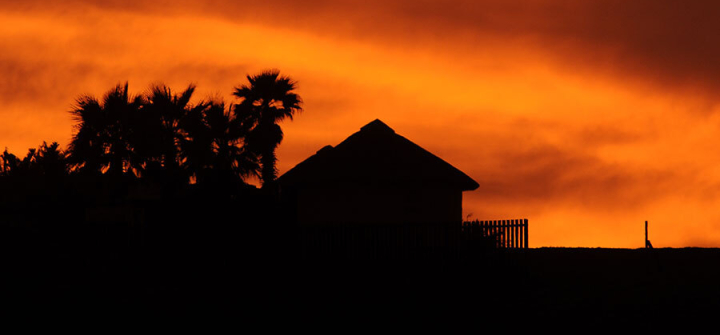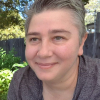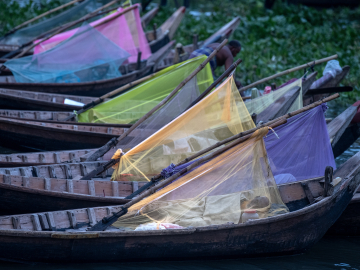Strapped for Time and Resources: Fighting Stroke in Rural South Africa
CAPE TOWN – When minutes mean the difference between death and life, chances that rural South Africans will survive a stroke are slim.
The lack of specialist care and tools such as MRIs or CT scanners in rural areas mean many patients will never receive the diagnosis or care they need in time.
A stroke is when the blood supply to the brain is limited, brain tissue doesn’t get the oxygen and nutrients it needs—and brain cells start to die within minutes, according to the US-based Mayo Clinic.
In South Africa, the stakes are particularly high: Stroke is the third leading cause of death among adults in South Africa. And nearly 40,000 South Africans died of cerebrovascular disease (the vast majority of such deaths are from stroke) in 2012, according to the latest available data from the South African Medical Research Council.
With just 20% of the population, rural South Africa carries at least half of the country’s stroke burden.
Acute treatments for strokes are mostly unavailable in small towns, forcing patients to travel to the big cities such as Cape Town, Bloemfontein, Johannesburg, and Gqeberha (formerly Port Elizabeth). But many start that journey too late, says Steve Feris, MBBS, an emergency medicine registrar at the Pietermaritzburg Metropolitan Hospital Complex, in the KwaZulu-Natal province.
Patients often fail to recognize they’re having a stroke and remain at home, hoping it will go away, Feris says. Symptoms occur suddenly and can include numbness or weakness in the face, arm, or leg—especially on one side of the body—according to the US CDC. Other symptoms include headache, confusion, and difficulty speaking.
Many of those who do seek treatment spend the day waiting in the line at a clinic and miss the critical window for treatment.
Even if they do urgently seek care, emergency transport can be difficult to access, says Feris. Ambulances are often short-staffed and overloaded with trauma, obstetrics, and neonatal emergencies.
Patients admitted to a local district hospital will often be given aspirin, a statin, blood pressure medications, and anticoagulation (if they experience atrial fibrillation). But most will never undergo a CT scan (computed tomography). A CT scan can show a blot clot or bleeding in the brain, however an MRI is more accurate.
At regional hospitals, stroke patients will get a CT scan but only special cases receive an MRI (magnetic resonance imaging) and an MRA (magnetic resonance angiogram), says Feris. An MRI is more sensitive than a CT and can provide a clear view of the tissue and blood vessels in the brain, leading to more accurate diagnoses and the likelihood of more effective treatment.
In most cases, however, even a CT can’t be done in time, says Feris. “In our district, 80% of patients present late,” he says. “Of the 20% that do present within 4.5 hours, 11% of those are seen at a clinic or district hospital without access to CT.”
The imaging is essential for meeting the time demands of treatments such as intravenous thrombolysis (IVT) and mechanical thrombectomy (MT), says Kathleen Bateman, a consultant neurologist and head of the Stroke Unit at Groote Schuur Hospital, University of Cape Town.
IVT involves the injection of clot-busting drugs through an intravenous line that delivers drugs directly to the site of the blockage. MT is a minimally invasive procedure in which an interventional radiologist uses specialized equipment to remove a clot from a patient’s artery.
IVT can be performed up to 4.5 hours after stroke onset, and MT can be done up to 6 hours after onset. Both require at least a CT scanner to image the brain and arteries. IVT can be initiated at secondary or district hospitals, but patients eligible for MT need to be transferred to a tertiary center.
Bateman says most public health sector hospitals in South Africa will rely on CT brain imaging rather than MRIs, which are much less widely available. (In South Africa, patients who use the public hospitals have to report to local clinics and primary health care facilities first. Some 80% of the population is dependent on public health care.)
Those lucky enough to survive a stroke often face a lack of rehabilitation services such as physiotherapy, speech therapy, and occupational therapy. The lack of rehabilitation options lead to poor long-term outcomes. “We need more hospitals, more staff and more equipment. The protocols are excellent, they just cannot be followed due to shortages of beds and staff,” says Feris.
“Without proper rehabilitation, most of our stroke patients do not return to an acceptable baseline and become a care burden to their families, and a financial burden to the state in the form of social grants,” he says.
Solving the challenge of reducing stroke deaths in rural (and urban) areas begins prevention, says Feris. That means fixing South Africa’s failing primary health care system to prevent the problem.
“We have a shortage of family physicians, so many primary care clinics are run by nurses and clinical associates who are overburdened,” he says. “Many of these stroke patients before having a stroke are complex with diabetic, hypertension, high cholesterol and HIV patients which require a greater level of insight into the pharmacological management.”
One solution for smaller hospitals to improve stroke care, says Bateman, is to adopt a “stroke champions” strategy that trains nonspecialists to be on the lookout for stroke patients when they arrive at small hospitals or clinics.
“It’s all about awareness and trying to act faster and more efficiently to refer stroke patients more quickly to larger hospitals,” Bateman says.
Ed. Note: This article is part of Global Health NOW’s Local Reporting Initiative, made possible through the generous support of loyal GHN readers.
Join the 50,000+ subscribers in 170+ countries who rely on Global Health NOW summaries and exclusive articles for the latest public health news. Sign up for our free weekday newsletter, and please share the link with friends and colleagues.
Sunrise in the Transkei region in Eastern Cape Province, one of the poorest and most rural of South Africa’s 9 provinces, May 2012. Image: Susan Winters Cook/Getty





